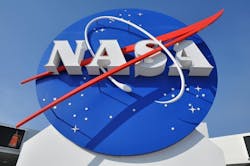WASHINGTON - The National Aeronautics and Space Administration (NASA) sought a provider of engineering services as well as developing and maintaining software and hardware used to conduct simulations for aerospace research and development across the agency. They found their partner in Metis Technology Solutions Inc. of Albuquerque, N.M.
This contract was issued as part of the Aerospace Research, Technology, and Simulations (ARTS) project, which could be worth up to $177 million. The contract, which begins 1 Dec. 2024, includes a one-year base period with options to extend through November 2029. It is structured as a hybrid of cost-plus-fixed-fee and firm-fixed-price, with an indefinite-delivery/indefinite-quantity component.
The contractor will provide support for the development, operation, and maintenance of simulators, integration labs, aircraft research systems, and simulation workspaces. Additionally, the contract covers the development and testing of advanced air traffic management automation tools, which may include new aviation ecosystem concepts. Most of the work will take place at NASA’s Ames Research Center in California and Langley Research Center in Virginia, with other government sites involved as needed.
Related: NASA announces Probe Explorers program, selects and funds studies
Earlier this year, NASA acknowledged the contractor's role in supporting the ARCTIC 3 simulation project, part of the U.S. Army’s Advanced Rotorcraft Configurations Test of Increased Capabilities. This project focuses on research in vertical-lift aircraft design.
Under a separate contract at NASA Ames, Metis simulation engineers were responsible for running the ARCTIC 3 simulation using the Vertical Motion Simulator. The team received a NASA Honor Award for their technical expertise and reliability in ensuring the success of the project.
"The ARCTIC 3 team worked above and beyond the call of duty to ensure that all parts of the simulation were stable, robust, and functional to support the experiment," said SimLabs III Program Manager Neil Otto. "I’m proud of our team who produced outstanding work, receiving a perfect score from their Army customers."
About the Author
Jamie Whitney
Senior Editor
Jamie Whitney joined the staff of Military & Aerospace Electronics in 2018 and oversees editorial content and produces news and features for Military & Aerospace Electronics, attends industry events, produces Webcasts, and oversees print production of Military & Aerospace Electronics.
